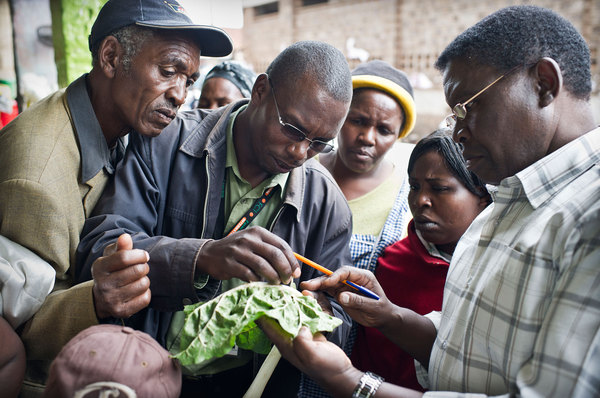The seed social network
A new study by the International Institute of Tropical Agriculture (IITA) looking at cowpea crop diversity following floods and drought in Mozambique has shown that seed sharing networks are a valuable way to maintain, and often improve, crop diversity. Informal sharing and trade of seed within and between local communities in the Limpopo River Valley,…
Update: New Pest & Disease Records (30 Nov 11)
We’ve selected a few of the latest new geographic, host and species records for plant pests and diseases from CAB Abstracts. Click on the links to view the abstracts. Molecular characterization of a new strain of sugarcane streak mosaic virus (SCSMV). Li WenFeng; He Zhen; Li ShiFang; Huang YingKun; Zhang ZhiXiang; Jiang DongMei; Wang XiaoYan;…
Update: Plant Health News (22 Nov 11)
Here’s a taste of some of the latest news stories about plant health: Black Sigatoka fungus hits Dominican Republic’s bananas Fresh Fruit Portal, 21 November 2011 Cassava Virus Spreading in East Africa CropBiotech Update, 18 November 2011 A Rapid PCR-Based Detection Method of Black Leaf Streak Disease in Indonesian Banana Crops CropBiotech Update, 18 November 2011 Scientists Develop New Product to Boost Kiwifruit…
Cassava – another superhero unmasked?
For those of you keeping a watchful eye on the plant health news feed, you may have noticed a recurring theme around the topic of cassava crops in East Africa over the last few days. Cassava, a staple crop across sub-Saharan Africa, has been the subject of a well-established battle against Cassava Mosaic Disease (CMD),…
How plant diseases attract plant pests
In the same way that mosquitoes transmit the malaria-causing parasite, Plasmodium, between humans, some species of leafhopper transmit phytoplasma bacteria between plants. Phytoplasmas are bacterial pathogens that infect the plant phloem and require sap-sucking bugs to transport them to other plants. Researchers at the John Innes Centre on Norwich Research Park have found that leafhoppers…
Update: New Pest & Disease Records (16 Nov 11)
We’ve selected a few of the latest new geographic, host and species records for plant pests and diseases from CAB Abstracts. Click on the links to view the abstracts. Species of Frankliniella (Thysanoptera, Thripidae): new records on mango orchards (Mangifera indica) in Brazil. Oliveira, M. D. de; Barbosa, F. R.; Almeida-Cortez, J.; Silveira, L. C.…
New Technology Sniffing out Pests
A recent meeting of crop experts has revealed some new ideas for detecting the presence of crop pests before they strike. These ideas include sampling the air for pathogen traces, measuring volatile organic compounds and detecting decreases in leaf tissue content.
Ozone pollution negatively affects crop yields
It is predicted that, as levels of the air pollutant, ozone, continue to increase, they will be highest in areas of the world with the most rapidly increasing population levels. This is bad news for crop growers in developing countries, as it has been found that high concentrations of ground-level ozone can have a negative…
Update: Plant Health News (09 Nov 11)
Here’s a taste of some of the latest news stories about plant health: Chile starts kiwifruit inspections for Psa-V disease Fresh Fruit Portal, 8 November 2011 Crop parasite may spread with global warming Business Weekly, 7 November 2011 Preventing Epitrix potato flea beetles FWi – Arable News, 7 November 2011 How parasites modify plants to…
Which is the world’s worst agricultural pest?
They have caused famines that killed millions; they have precipitated the release of hundreds of megatonnes of carbon; they even turned the UK into a nation of tea-drinkers. And today they are still destroying around 40 per cent of the crops that we grow worldwide. Agricultural pests and diseases have a lot to answer for.

